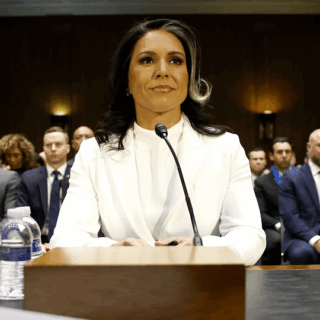
In its own way, terrorism became a mass movement in the Russian Revolution of 1905-1907. However, few historians consider terrorism a mass movement but regard it as something committed by individuals or small groups.
The Revolution of 1905-1907 was the first European revolution with a strong terrorist component. Politically motivated murders did happen in previous revolutions, but what turned politically motivated murders into terrorism in Russia was the degree of organization used by the revolutionaries. Terrorism was a mass movement because it was widely used by many leftist parties and movements and supported by many liberals. As well, many conservatives took an ambivalent stance on terrorism and often withheld their support from the government. Some far-right political activists imitated the leftists and practiced terrorism.
The period from 1901-1911 truly marks the birth of mass terrorism in the 20th century. The statistics given by American historian Anna Geifman are shocking. Between October 1905 to the end of 1907, the number of government representatives — both civilian and military — reached 4,500. Victims from the general population included 2,180 killed and 2,530 wounded. The total number of victims was more than 9,000. Between January 1908-May 1910, the government recorded 19,957 terrorist acts and revolutionary robberies–<<expropriations>>. The dead included 732 government persons and 3,051 private persons and the wounded included 1,022 government persons and 2,829 private persons. The number of victims was 7,634. Geifman estimated that the total number of victims of revolutionary terrorism between 1901-1911 was about 17,000. [1, p. 21]
Terrorism requires an infrastructure with a division of labor to support it. The fact that terrorism continued after mass protest movements were crushed by mid-1907 shows that it took on a life of its own and that there were enough people in Russia willing to keep it going.
Terrorism in the Russian Empire was a mass movement of society, the educated strata of the population. Specifically, terrorism was a mass movement of the intelligentsia — the most politically conscious element of society. The intelligentsia created political parties and movements across the spectrum, and, in turn, the parties determined their attitudes toward terrorism.
It is true that workers, peasants, and other members of the lower classes participated in terrorist acts. However, political parties and movements, including anarchists and marginal groups, were led by the intelligentsia.
The infrastructure of terrorism required more than just people to carry out assassinations or armed robberies, called expropriations by the revolutionaries. Terrorism required party leaders to justify it and formulate its goals. Terrorist activities required people to make bombs, to track the movements of potential targets in terrorist acts, people to serve as decoys or assist in getaways. Terrorists needed money, either from expropriations or donations, to finance operations, contacts in the bureaucracy and police, false identity papers, people to run safe houses or assist in escapes, lawyers to defend terrorists in trials, contacts in European countries and North America for donations, weapons, favorable publicity in the mass media, people willing to defend Russian terrorists from imprisonment and extradition to Russia.
This huge infrastructure became possible thanks to the political subculture of society and the intelligentsia. Continual hostility between the government and society ensured that terrorism would be met with understanding, sympathy and varying degrees of assistance. The result was the mass criminalization of Russian society in the first decade of the 20th century.
It is extremely difficult to determine just how many people participated in terrorism in Russia between 1901-1911. The number of participants and varying degrees of sympathizers could run into the thousands. This is a huge contrast from the People’s Will’s terrorist campaigns between 1879 and 1894 when the number of terrorist participants merely numbered a few dozen.
Geifman’s estimates that 17,000 people were killed or wounded by leftist terrorists between 1901-1911 suggests a huge number of participants. However, the lines between terrorist violence and the violence of mass protest movements and criminal actions were often blurred.
Under the category of mass violent and non-violent protest movements, we can include the movements of workers, peasants and other rural inhabitants, professional people, employees, and other urban strata, university and other post-secondary students, secondary school students, advocates of women’s rights, soldiers, sailors, ethnic and religious minorities along with the mass movements of empire-wide, ethnic minority, Russian nationalist, regional, and local parties and movements spanning the political spectrum from right to left. Women often participated in many mass movements as well as teenagers and even children.
The violence of these movements usually was expressed through uprisings, strikes, demonstrations, mutinies in the army and fleet, pogroms, peasant partisan activities in the forests and mountains, seizure and destruction of state and private property, inter-ethnic and inter-religious conflicts, for example, between Christian Armenians and Muslim Azerbaijanis, the overthrow of local authorities and the establishment of alternative authority right up to forming village republics, political and criminal murders of government and private people, frequent use of Lynch Law [самосуд] and other forms of popular vengeance. [2, c. 51]
The Revolution of 1905-1907 included conflicts not only between the government and different strata of the population, but also between different strata and within them. There were conflicts on political, social (estates and classes), ethnic, religious, regional, local, age, gender, and other lines.
The biggest mass protest movements took place in the border regions where ethnic, religious, and social factors often intersected. Huge outbreaks of violence took place in the western and southern provinces—Belarus, Ukraine, and Moldova—Poland, the Baltic region and in the Caucasus. Alongside these mass outbreaks of violence, there were many terrorist acts committed for political, social, ethnic, and religious reasons. [2, c. 51] Trying to separate terrorist acts from acts of mass protest movements has its challenges.
What also makes it difficult to determine the volume of terrorism was the fact that Soviet historians denied that the Bolsheviks practiced terrorism. While Vladimir Lenin condemned the terrorism of the Socialists-Revolutionaries in 1902, by early 1906, he was urging both Bolsheviks and Mensheviks to form fighting squads (боевые дружины) and conduct “partisan actions” (партизанские действия). This was a euphemism for terrorism.
The authors of one Soviet collective monograph emphasized the massiveness of Bolshevik “partisan activities” in the Revolution of 1905-1907. Authors recognized that Lenin had called for the organization of fighting squads and conducting partisan struggle. These appeals were disguised as appeals to organizations of the front ranks of the revolution army (all supporters of the revolution) to prepare for an uprising. The authors praised the creation of the “Combat Technical Group” (bomb-making laboratory) of the Bolshevik Central Committee and of fighting organizations and squads. It was noted that Lenin emphasized how the bomb had stopped being a weapon of individual terrorists and had become the weapon of the people’s uprising.
The authors wrote that by December 1905 there were 70,000 members of Social Democratic fighting squads in 300 cities and other localities. Peasant partisan activities on the borderlands, especially in the Caucasus and Baltic provinces, received high praise. Partisan activities, especially after the crushing of the Moscow armed uprising in December 1905, included the destruction of police stations and local administration offices, fights with Black Hundred detachments, organizing self-defence against pogroms, operations in freeing arrested revolutionaries, seizure of depots containing weapons and supplies. All these partisan operations were aimed at disorganizing the forces of the enemy—the government. [3, cc. 361-378, 382) However, the authors did not mention Bolshevik participation in expropriations. Nonetheless, the list of Bolshevik “partisan actions” shows that Bolshevik and Menshevik fighting activity really did not differ much from the activities of Socialists-Revolutionaries (SRs), SR Maximalists, and anarchists. Many of these “partisan activities” can be considered acts of terrorism and thus increase the frequency of terrorism during and after the revolution.
Also difficult is distinguishing criminal violence from terrorism. Criminal violence exploded during the revolution because of the breakdown of order and the fact that local administration stopped functioning in many parts of the empire. Many people took the law into their own hands. Landowners and business owners often hired bodyguards for their personal security and private militias to protect their property against attacks by workers and peasants. Homeowners organized vigilance and self-defense committees. Jews and their sympathizers organized self-defence units during pogroms. Peasants often practiced Lynch Law against criminals especially in places where they had overthrown the local authorities and established alternative authority. [4, pp. 128-133].
At the start of the 20th century, police annually investigated 17,000 murders. In 1904-1908, police investigated 30,000 murders each year. [5, p. 34] Criminal violence often took on political dimensions. Police often could not distinguish between political and criminal motives in murder cases. Often “economic terrorism” intersected with criminal banditry during “revolutionary expropriations”–armed robberies of banks, other financial institutions, government and private offices, and private individuals to raise money for the revolutionary movement. Many criminals, when arrested, often told the police that they were anarchists or revolutionaries in hopes of obtaining the privileged status of political criminals. Banditry in many European countries often took on political overtones because people often saw bandits as people’s avengers against injustice. Banditry in the Russian Empire was no exception so we may assume that the extent of participation in terrorism was higher.
Terrorism was truly a mass movement in the Revolution of 1905-1907, but it is the great unknown movement. Let’s keep exploring why terrorism remains the Great Unknown.
Sources Used
- Geifman, Anna. Thou shalt kill: revolutionary terrorism in Russia, 1894-1917. Princeton NJ: Princeton University Press, 1993. Русский перевод в электронной форме. Гейфман, Анна. Революционный террор в России, 1894— 1917. Москва: КРОН-ПРЕСС, 1997. https://royallib.com/book/geyfman_anna/revolyutsionniy_terror_v_rossiihtml
- Рокки, Т. Российская революция 1905-1917 гг. как первая гражданская война в Европе в ХХ веке. (Rocchi, T. The Russian Revolution of 1905-1907 as the first civil war in Europe in the 20th century). История. Историки. Источники. 2022, № 4, сс. 46-55. https://s.esrae.ru/history2014/pdf/2022/4/362.pdf
- Исторический опыт трех российских революций. Книга первая. Генеральная репетиция Великого Октября: Первая буржуазно-демократическая революция в России. (The historical experience of three Russian revolutions. Book One. The dress rehearsal for Great October: The First Bourgeois-Democratic Revolution in Russia). Москва: Политиздат, 1985.
- Ascher, Abraham. The revolution of 1905. Volume I: Russia in disarray. Stanford CA: Stanford University, 1988.
- Daly, Jonathan W. The watchful state: security police and opposition in Russia, 1906-1917. DeKalb IL: Northern Illinois University Press, 2004.





